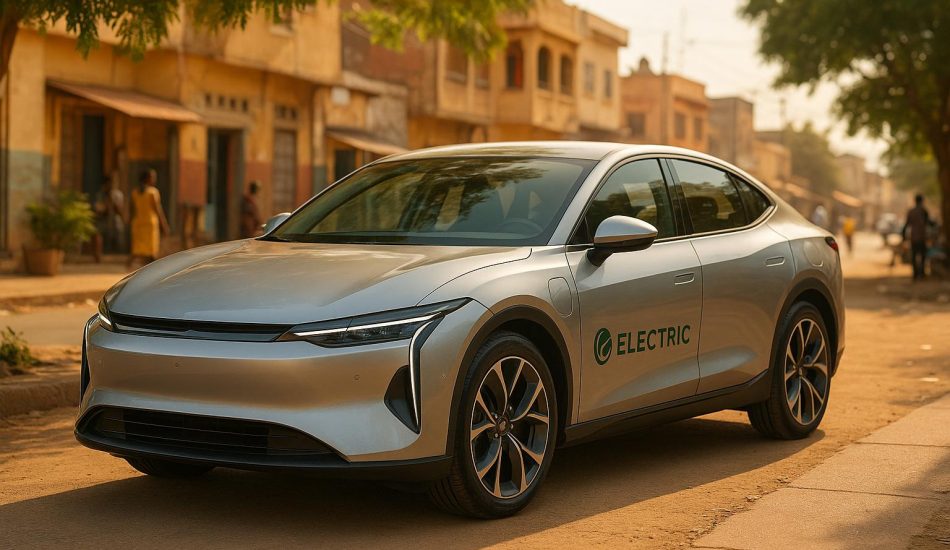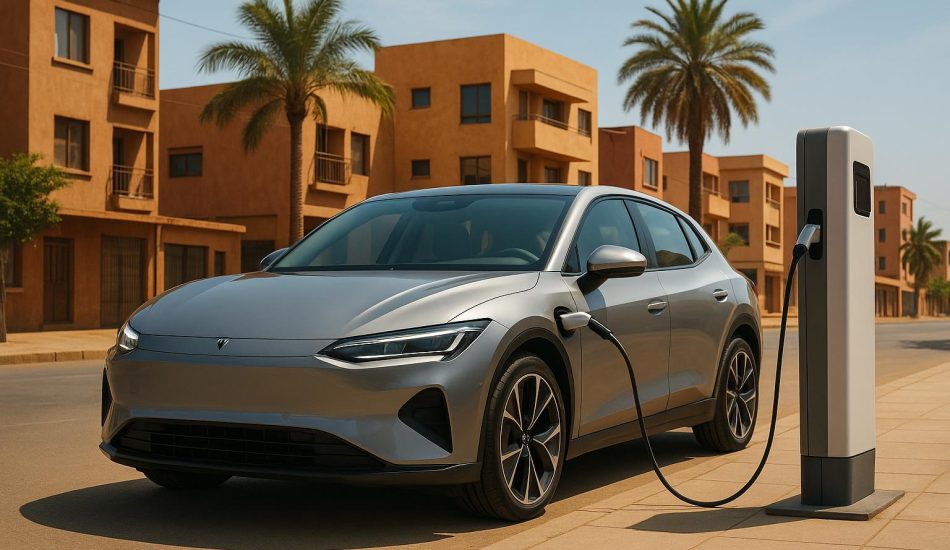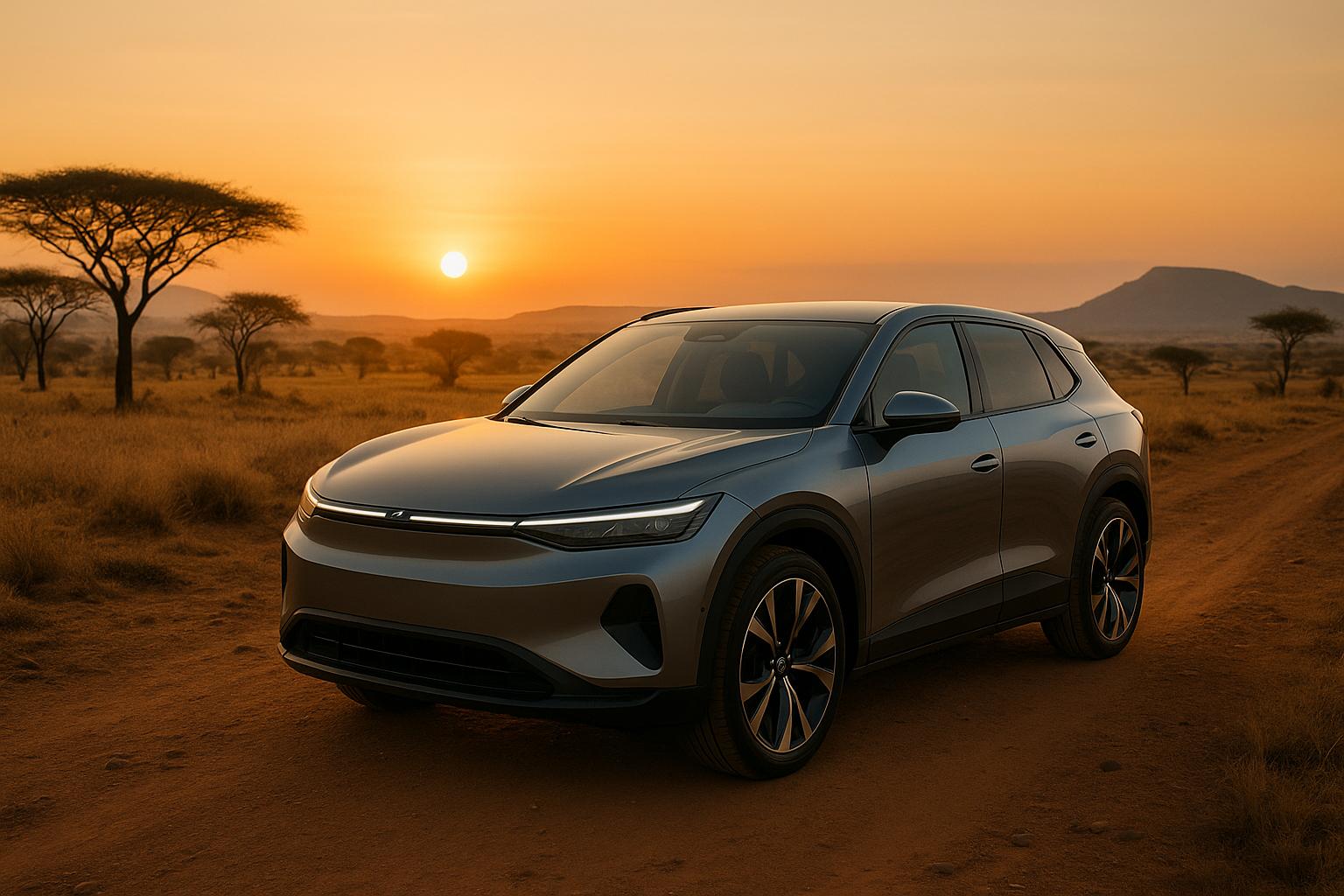
Looking for the best electric SUVs to import to Africa in 2025? Here’s a quick guide to help you pick the right one, considering range, price, and adaptability to African roads. With rising fuel costs and growing EV infrastructure in countries like South Africa, Ghana, and Kenya, electric SUVs are becoming a practical choice. However, import duties and taxes can significantly affect costs, so choosing wisely matters.
Top Models at a Glance:
- Tesla Model Y: 386-mile range, $61,630 starting price, 15-min fast charge (166 miles).
- BYD Tang EV: 329-mile range, $31,700, seats 7, V2L capability.
- Hyundai Ioniq 5: 318-mile range, $42,600, ultra-fast 800V charging.
- BYD Sealion 7: 283–312 miles, V2L, heat pump for extreme temps.
- Cupra Tavascan: 260–280 miles in real-world conditions, durable for tough terrains.
- Nissan Ariya: 220–315 miles, dual battery options, V2L feature.
- Geely EX5 African Edition: 220–260 miles, rugged design, $32,000 starting price.
Quick Comparison:
| Model | Range (miles) | Starting Price | Fast-Charge Time | Key Features |
|---|---|---|---|---|
| Tesla Model Y | 386 | $61,630 | 15 min (166 mi) | Supercharger network |
| BYD Tang EV | 329 | $31,700 | 30 min (30%-80%) | Seats 7, V2L |
| Hyundai Ioniq 5 | 318 | $42,600 | 20 min (10%-80%) | 800V charging |
| BYD Sealion 7 | 283–312 | TBD | 24 min (10%-80%) | V2L, heat pump |
| Cupra Tavascan | 260–280 | $58,000 | 30 min (10%-80%) | Rugged suspension |
| Nissan Ariya | 220–315 | $47,000 | 35 min (10%-80%) | Dual battery options |
| Geely EX5 | 220–260 | $32,000 | 60 min (10%-80%) | Rugged, affordable |
Key Considerations:
- Import Costs: Import duties vary – South Africa imposes up to 25%, while Kenya adds 16% VAT.
- Charging Infrastructure: Check for compatibility with local charging networks and home charging options.
- Terrain Adaptation: Models like the Cupra Tavascan and Geely EX5 offer enhanced suspension and ground clearance for rough roads.
- Practical Features: V2L capability in models like the BYD Tang EV and Nissan Ariya allows powering external devices during outages.
Tip: Research local import regulations and incentives to save on costs. Some countries, like Rwanda, offer zero VAT on EV imports.
This guide gives you the essential details to make an informed decision. Dive into the full article for more on importing regulations, maintenance tips, and specific model features.
African governments welcome Chinese electric vehicle imports, production amid looming trade war
1. BYD Sealion 7
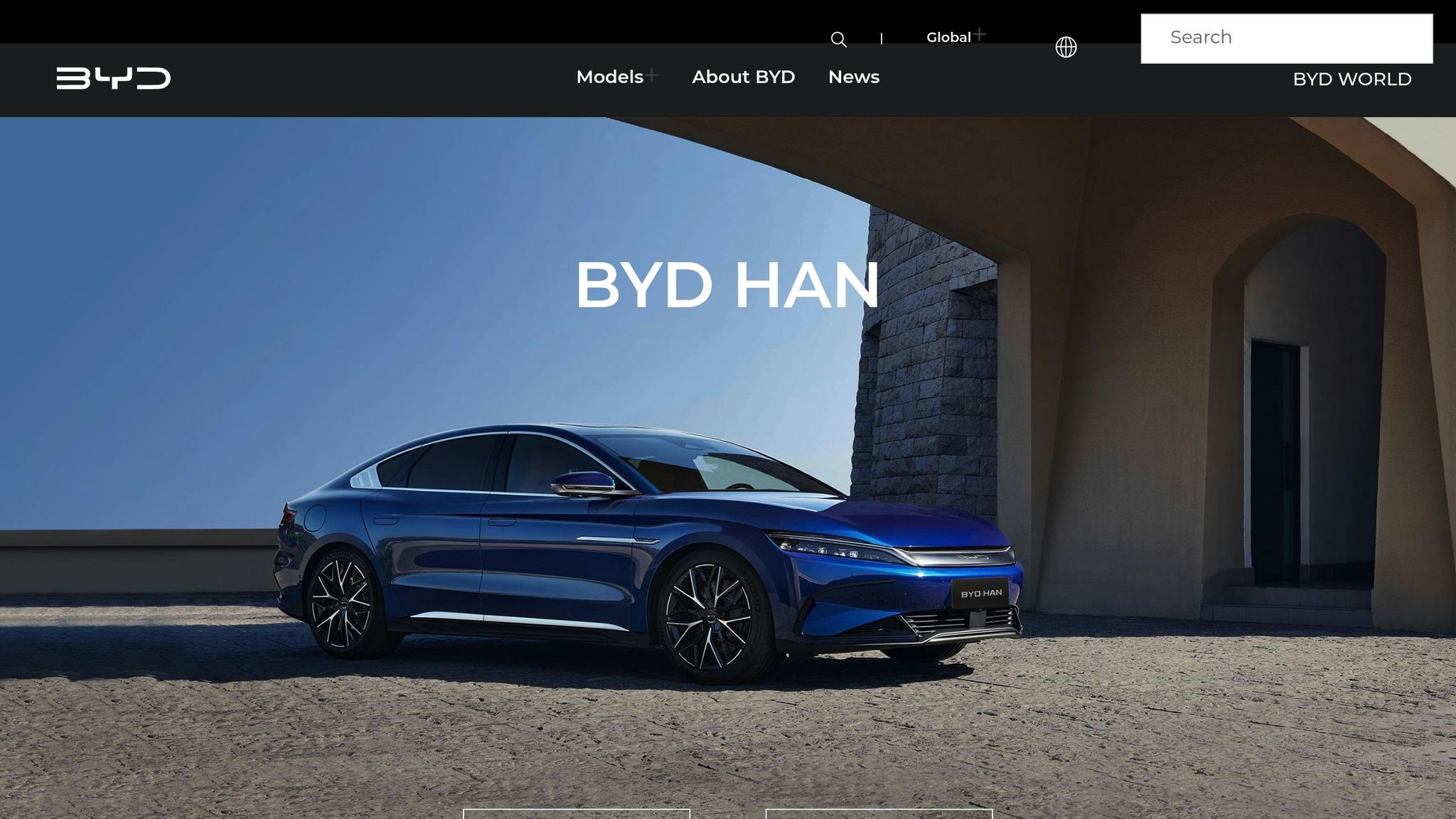
The BYD Sealion 7 is built to handle the challenges of African roads, combining a durable battery system with flexible charging capabilities. It’s designed to meet both urban commuting and long-distance travel needs, thanks to two battery configurations tailored for different driving preferences:
| Configuration | Battery Capacity | Range | Fast-Charging |
|---|---|---|---|
| Standard Range | 82.5 kWh | 283 miles | 150 kW DC |
| Extended Range | 91.3 kWh | 312 miles | 230 kW DC |
The SUV is equipped with a heat pump to ensure the battery operates efficiently, even in extreme temperatures. For charging, it offers AC charging (up to 11 kW) for overnight convenience and ultra-fast DC charging that can boost the battery from 10% to 80% in just 24 minutes at 230 kW.
One standout feature is the standard Vehicle-to-Load (V2L) capability, which allows the Sealion 7 to function as a mobile power source – an invaluable tool in areas with inconsistent electricity access. Performance-wise, the high-speed rear motor, capable of reaching up to 23,000 rpm, ensures both responsive handling and energy efficiency across a variety of road conditions.
2. Cupra Tavascan
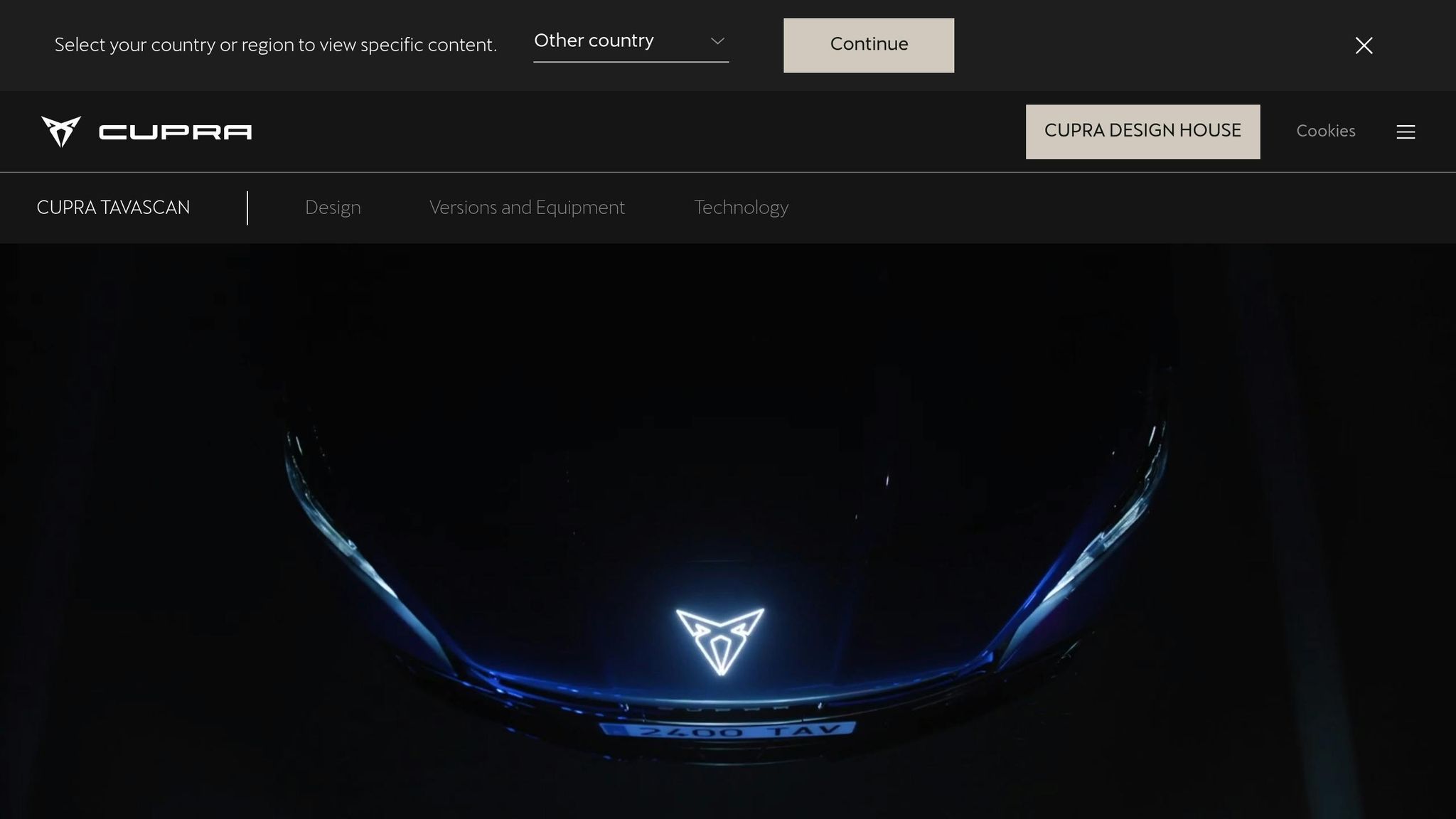
The 2025 Cupra Tavascan is a dual-motor SUV that blends European engineering with the demands of African roads. With 340 horsepower and 510 Nm of torque, it offers the power and traction needed to handle a variety of terrains while ensuring a smooth driving experience.
Powered by a 77 kWh battery, the Tavascan boasts a WLTP range of 310 miles. In real-world African conditions, this typically translates to around 260–280 miles. Its advanced thermal management system, dual-zone climate control, and integrated heat pump allow it to perform reliably even in extreme temperatures, up to 122°F.
| Feature | Specification | Benefit for African Markets |
|---|---|---|
| Ground Clearance | 6.7 inches | Handles uneven and rough roads |
| DC Fast Charging | 135 kW | Charges from 10-80% in 30 minutes |
| AC Home Charging | 11 kW | Full charge in 7-8 hours |
| Curb Weight | 4,630 lbs | Offers stability and efficiency |
| Battery Protection | IP67-rated | Resistant to dust and water |
Designed with durability in mind, the Tavascan comes equipped with reinforced sidewall tires mounted on 20-inch wheels, along with a dust filtration system for the cabin. Its adaptive suspension system adjusts automatically to different surfaces, ensuring a comfortable ride whether you’re on a paved highway or a rugged dirt road.
Import Cost Breakdown for South Africa
- Base price: $58,000
- Shipping: $3,000
- Import duty (25%): $14,500
- VAT (15%): $8,700
- Additional fees: $1,800
- Total landed cost: $86,000
Regular maintenance is essential for the Tavascan, particularly given the limited service network across Africa. Service checks are required every 20,000 miles or once a year. While basic maintenance tasks are simple, more complex work – like battery or motor servicing – requires trained EV technicians. The 8-year/100,000-mile battery warranty provides added reassurance, though warranty services may need to be coordinated with authorized dealers in larger cities.
The Tavascan’s strong performance, thoughtful design, and detailed cost breakdown make it a compelling option for those exploring electric SUVs in Africa.
3. Hyundai Ioniq 9
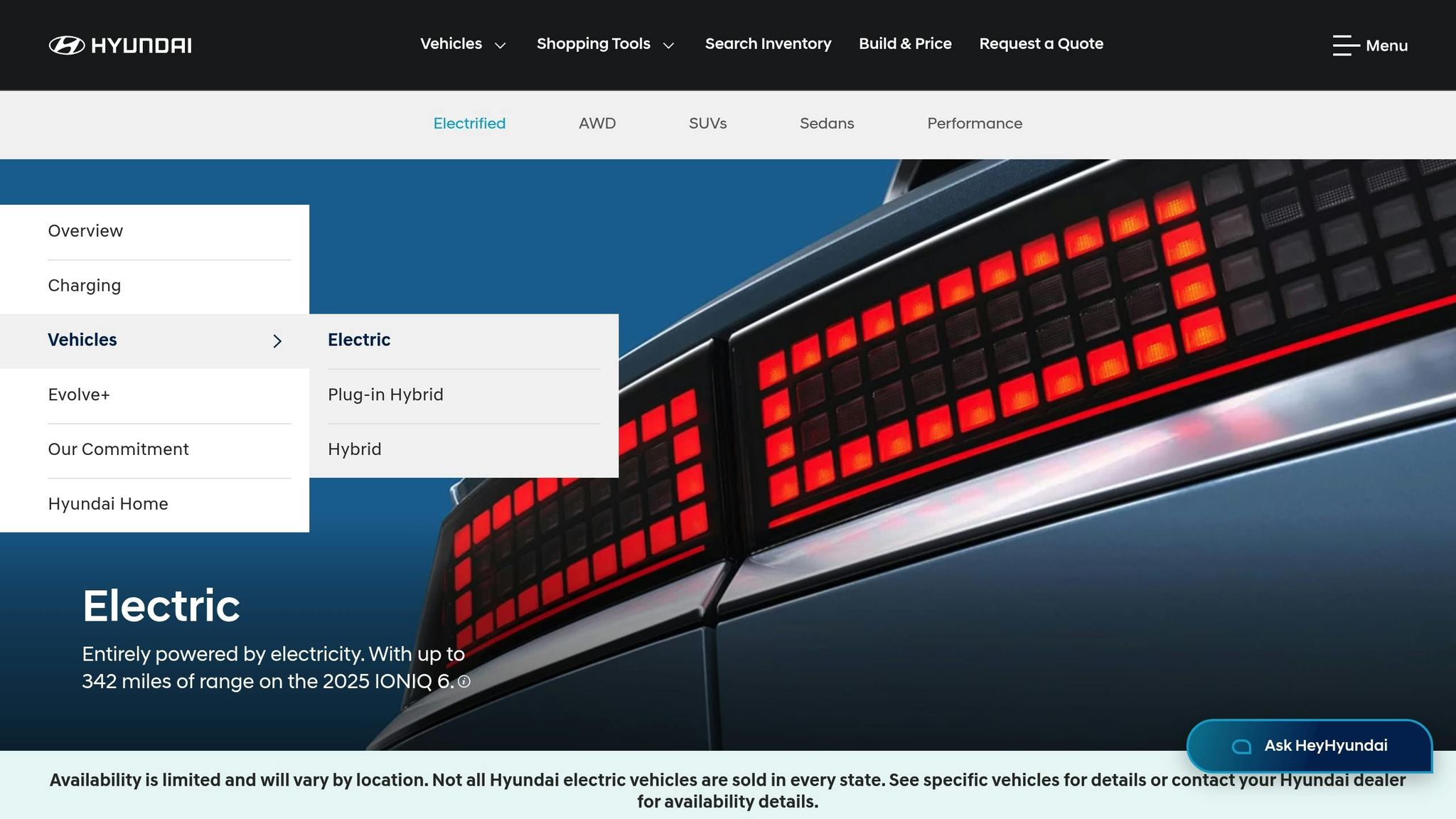
The 2025 Hyundai Ioniq 9 takes a bold step forward in the world of electric SUVs, offering a blend of impressive range and features tailored for areas with developing charging infrastructure. Built on Hyundai’s E-GMP platform, this SUV is powered by a 110.3 kWh NCM lithium-ion battery, delivering a WLTP-estimated range of up to 620 km (about 385 miles) under optimal conditions. Even in sub-freezing temperatures, it maintains a range exceeding 400 km, making it a reliable choice for colder climates.
| Charging Method | Time | Power Output |
|---|---|---|
| Ultra-Fast DC (350 kW) | 24 min (10–80%) | 800V system |
| NACS V3 Supercharger | 40 min (10–80%) | 400V system |
| Home AC (240V) | 9 h 40 min (10–100%) | 11 kW |
These charging options ensure the Ioniq 9 is ready for a variety of driving needs. Its advanced thermal management system helps maintain peak performance, achieving an energy efficiency of 194 Wh/km.
For those considering importing the Ioniq 9, it’s worth noting that South Africa imposes a steep 45% import duty on electric vehicles. Importers should confirm all related fees with local authorities to avoid surprises.
One of the Ioniq 9’s standout features is its Vehicle-to-Load (V2L) capability, which allows it to function as a mobile power source. It also supports both 400V and 800V charging systems, ensuring compatibility with high-power chargers. Additional features like an EV route planner and remote pre-conditioning enhance its practicality and help maximize range. For South African users, utilizing Eskom’s off-peak charging tariffs could further lower operating costs.
4. Kemet Automotive Nandi
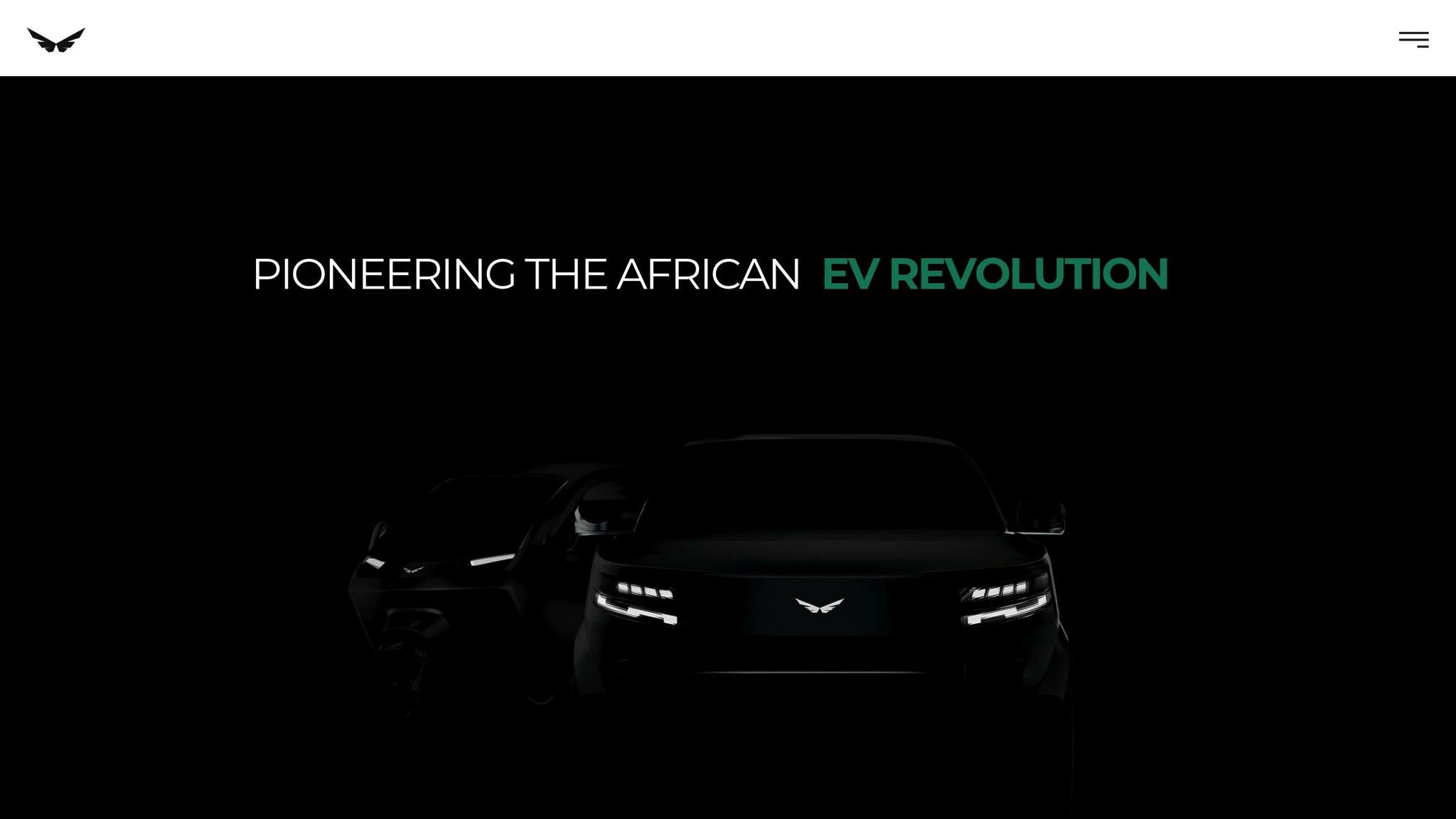
The Kemet Automotive Nandi is built to handle Africa’s mix of bustling urban streets and rugged, off-road terrains. Its design makes it well-suited for import into various regions across the continent. Alongside its durable construction, understanding the necessary import processes is crucial for buyers.
To bring the Nandi into South Africa, importers must navigate the country’s strict tariff system. This includes registering with SARS (South African Revenue Service) and obtaining an importer’s code. Consulting with professionals can help simplify the process and ensure compliance with all regulations.
| Import Requirements by Region | Documentation Needed | Additional Fees |
|---|---|---|
| South Africa | SARS Registration, Import Code | VAT and Import Duty |
| Botswana | Import Permit, SACU Clearance | 14% VAT |
| Kenya | PVoC Certificate, Simba 2005 Processing | Import Duty |
Working with clearing agents can make handling paperwork like import declarations, commercial invoices, and packing lists much easier.
For those importing into Botswana, obtaining permits for vehicles coming from outside the Southern African Customs Union (SACU) is essential. Similarly, for Kenya, following the outlined requirements and ensuring proper customs processing is key.
Beyond its regulatory advantages, the Nandi stands out with features designed specifically for African conditions:
- Advanced suspension system tuned for uneven and challenging roads.
- Optimized ground clearance to handle unpaved surfaces with ease.
- Reinforced underbody protection to guard against rough terrains.
- Climate-adaptive battery system with advanced monitoring tools, ensuring reliable performance in varying weather conditions.
These thoughtful design elements make the Kemet Automotive Nandi a practical and reliable choice for Africa’s diverse driving environments.
sbb-itb-99e19e3
5. Nissan Ariya 2025
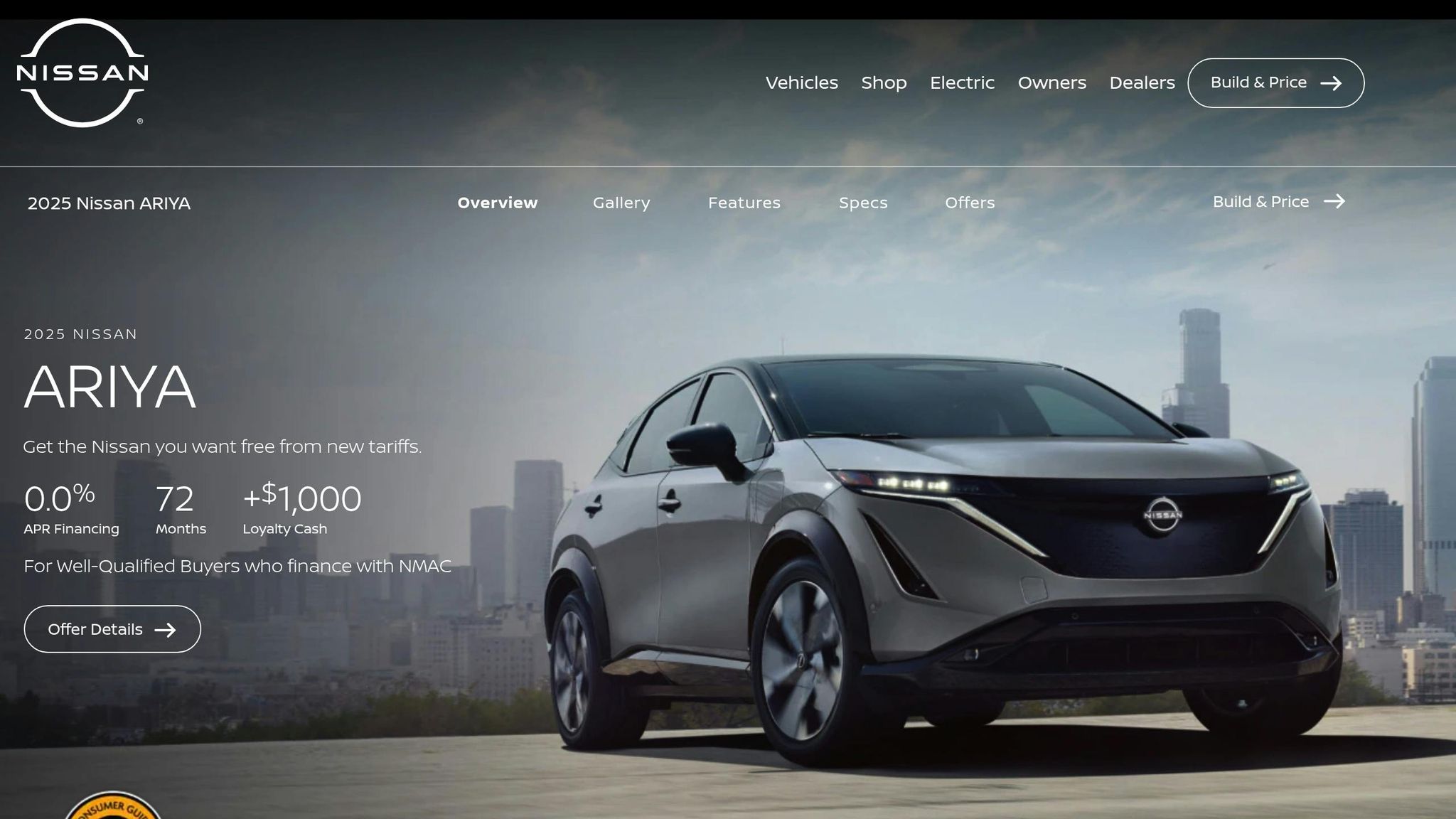
The 2025 Nissan Ariya strikes a balance between range, performance, and practicality, making it a strong contender for African markets. Buyers can choose between two battery options: a 63 kWh battery offering 220–240 miles of range or an 87 kWh battery capable of up to 315 miles. This flexibility ensures the Ariya meets diverse driving needs while delivering reliable performance.
Two powertrain options are available: a 215-hp single-motor front-wheel drive for everyday use or a 389-hp e-4ORCE dual-motor system, which provides better traction on slippery or uneven surfaces.
| Feature | Standard Range | Extended Range |
|---|---|---|
| Battery Capacity | 63 kWh | 87 kWh |
| Range | 220–240 miles | 300–315 miles |
| Charging (DC Fast) | 130 kW | 130 kW |
| 10–80% Charge Time | 35 minutes | 35 minutes |
| Ground Clearance | 7.5 inches | 7.5 inches |
The Ariya’s onboard charger supports AC charging from 3.7 to 22 kW, while DC fast charging handles up to 130 kW. This setup is designed to handle power fluctuations, which are common in some areas.
For regions with challenging climates, the Ariya is equipped with advanced features like battery thermal management, improved dust filtration, UV-resistant interior materials, and a heat pump for efficient climate control.
Pricing starts at $47,000 for the standard version and $54,000 for the extended range model in the U.S. However, import duties and taxes vary by country:
- South Africa: 25% import duty, with a reduced 18% rate for EVs
- Kenya: 25% duty plus 16% VAT
- Nigeria: Up to 70% in combined duties and taxes
Additional costs for importing include shipping ($2,000–$4,000), port handling ($500–$1,000), and customs clearance ($300–$800). Maintenance is supported by Nissan’s growing service network across Africa, with EV service centers in major cities like Johannesburg, Cairo, and Nairobi.
With features like adaptive suspension and offline navigation, the Ariya is well-suited for Africa’s diverse road conditions. Its vehicle-to-load (V2L) function adds extra convenience during power outages, allowing it to power external devices or even small home appliances.
6. Geely EX5 African Edition
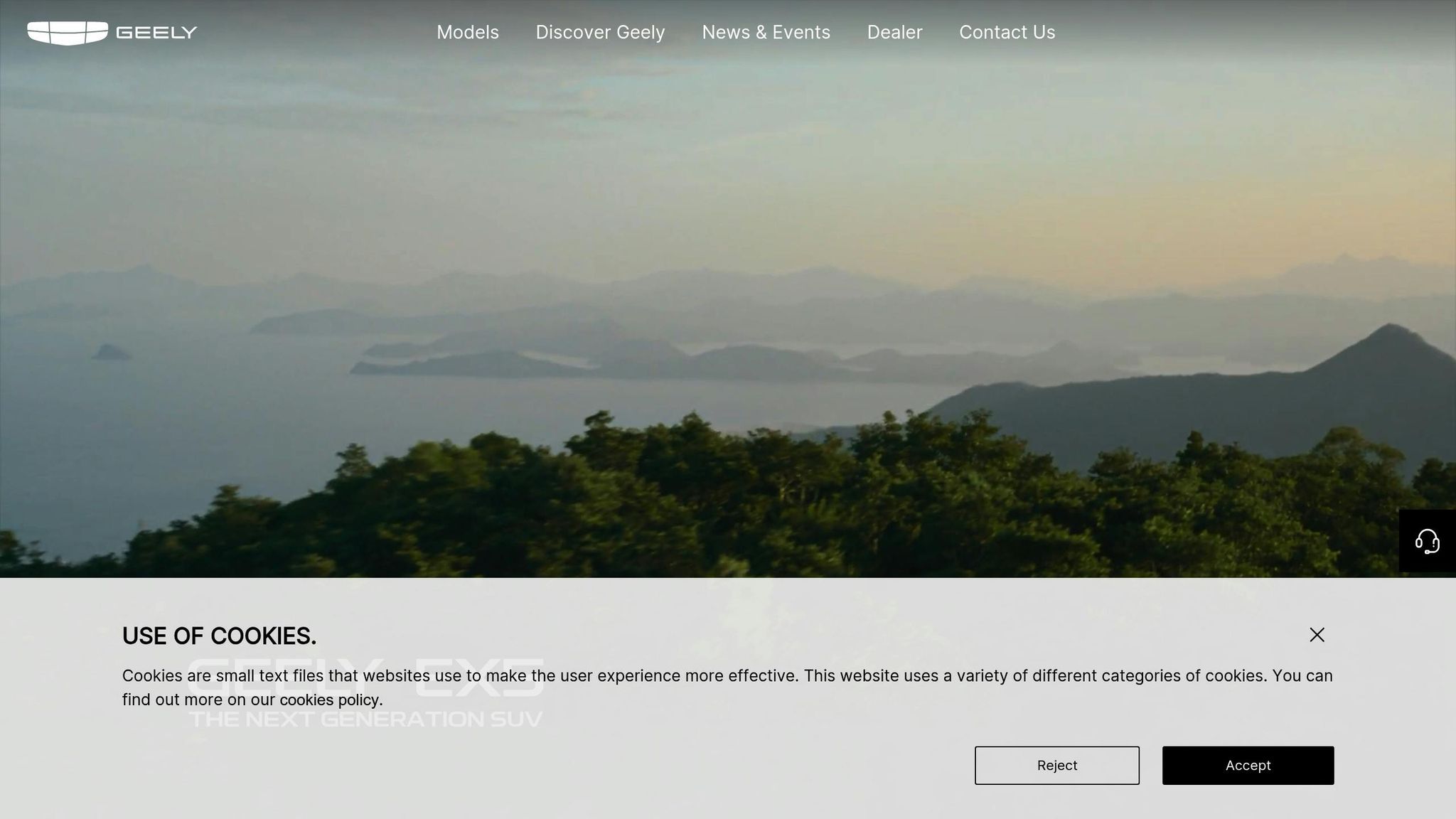
The Geely EX5 African Edition is designed specifically for the diverse and demanding conditions of African roads. It combines practicality with toughness, featuring a reinforced chassis, improved ground clearance, durable tires, and sturdy underbody protection. Whether you’re navigating city streets or tackling rugged terrain, this SUV is built to handle it all.
| Specification | Details |
|---|---|
| Battery Capacity | 52–60 kWh |
| Range | 220–260 miles |
| DC Fast Charging | Up to 60 kW |
| AC Charging | Up to 7.2 kW |
| Ground Clearance | Enhanced |
| Starting Price | $32,000 |
Beyond its rugged build, the EX5 is equipped with advanced features to enhance performance. Its CCS2 port ensures compatibility with varying local grid conditions, while an upgraded battery cooling system helps manage high temperatures and voltage shifts. Africa-specific modifications include reinforced suspension, all-terrain tires, underbody protection, and a dust-resistant cabin filtration system – perfect for the region’s unique challenges.
The SUV also offers a localized infotainment system with offline navigation and maps, supporting multiple African languages. This makes it especially useful in areas with limited internet access.
Pricing starts at around $32,000, though final costs will depend on local import duties, VAT, and other fees. Be sure to check these factors for accurate pricing in your area.
To support owners, Geely is working with local dealerships and service centers across major African cities. They provide maintenance packages, remote diagnostics, and over-the-air software updates to ensure the EX5 remains reliable and performs well over time. This thoughtful approach highlights Geely’s commitment to meeting the specific needs of African drivers.
7. Tesla Model Y (Long Range)
The 2025 Tesla Model Y Long Range has a starting price of $46,880, though import duties and taxes will depend on your location. Check out the detailed specs and features below to see how the Model Y measures up against other SUVs in its class.
SUV Specs and Features Comparison
Here’s a breakdown of key specs tailored to African driving needs, focusing on range, pricing, charging speed, and terrain adaptability.
| Model | Range (mi) | Starting Price | Fast-Charge Time | Key Feature |
|---|---|---|---|---|
| BMW iX xDrive Sport 60 | 426 | Not provided | Not provided | Extended range |
| Tesla Model Y | 386 | $61,630 | 15 min (166 mi) | Supercharger network |
| Porsche Macan | 398 | Not provided | Not provided | Premium performance |
| BYD Tang EV | 329 | $31,700 | 30 min (30%-80%) | 7-seat with V2L |
| Hyundai Ioniq 5 | 318 | $42,600 | 20 min (10%-80%) | 800V charging |
| Geely Geometry C | 298 | $53,730 | 30 min (20%-80%) | Compact design |
| Toyota bZ4X | 252 | $37,070 | 30 min (10%-80%) | X-MODE traction |
The table above provides a snapshot of the most relevant details. Let’s dive deeper into the specifics.
Range and Efficiency
For drivers covering long distances, the BMW iX xDrive Sport 60 leads with an impressive 426-mile range. The Porsche Macan and Tesla Model Y follow closely, offering 398 and 386 miles, respectively. These options are well-suited for extended trips, even in remote areas.
Charging Capabilities
Tesla’s Model Y takes the lead in charging speed, adding 166 miles in just 15 minutes using its Supercharger network. The Hyundai Ioniq 5 also impresses with its ability to charge from 10% to 80% in just 20 minutes, thanks to its advanced 800V system. Other models, like the BYD Tang EV, offer competitive charging speeds but with slightly longer wait times.
Ground Clearance and Terrain Management
For navigating Africa’s diverse terrain, the Toyota bZ4X stands out with its X-MODE traction system, designed to boost grip on unpaved or slippery roads. While other models may offer varying ground clearance levels, the bZ4X’s focus on traction makes it a strong contender for challenging driving conditions.
Value Consideration
The BYD Tang EV offers exceptional value at a starting price of $31,700, making it a more budget-friendly option. This is particularly beneficial when factoring in import duties and luxury taxes, which can significantly increase vehicle costs in many African markets.
Climate Adaptation
High temperatures across Africa can impact battery performance, but liquid cooling systems in these SUVs help maintain steady charging speeds and reliable performance, even in extreme heat.
Practical Features
Some models, like the BYD Tang EV, include V2L (Vehicle-to-Load) capability, which allows the vehicle to power external devices – a handy feature during power outages. Additionally, terrain management systems, such as Toyota’s X-MODE, provide extra confidence for drivers tackling rough or uneven roads.
Each of these SUVs brings unique strengths to the table, catering to a variety of needs and preferences for African drivers. Whether it’s range, affordability, or advanced features, there’s an option to suit different lifestyles and driving conditions.
Next Steps for Importing Your Electric SUV
If you’re planning to import an electric SUV, here’s a straightforward guide to help you navigate the process. This builds on the detailed specifications and comparisons we’ve covered earlier.
Research Import Regulations
Start by understanding the import requirements for your country. Many African nations now offer incentives aimed at encouraging electric vehicle (EV) adoption. Here’s a quick look at some examples:
| Country | Key Import Benefits | Notable Requirements |
|---|---|---|
| Angola | Tax cuts available until 2032 | Standard vehicle registration |
| South Africa | EU trade agreement (7% duty reduction) | 25% import duty + VAT |
| Rwanda | Zero VAT on imports | Registration documentation |
| Ghana | Duty waivers for EVs | Homologation compliance |
Understanding these regulations can save you time and money while ensuring a smooth import process.
Charging Infrastructure Assessment
Before importing your SUV, evaluate the local charging infrastructure. Consider these factors:
- Power grid reliability: Is the local grid stable enough to support EV charging?
- Charging station availability: How far apart are the charging stations in your area?
- System compatibility: Will your SUV’s charging system work with the available stations?
- Home charging options: Can you install a home charging system for added convenience?
These assessments are essential to ensure your electric SUV fits seamlessly into your daily life.
Cost Optimization Strategies
To keep costs in check, take advantage of regional benefits:
- Use any available duty reductions or waivers specific to EV imports.
- Prepare all necessary documentation, including certifications, import permits, and insurance, to avoid unexpected delays or fees.
Build a Local Support Network
Once your vehicle arrives, establish connections with the right local support services:
- Licensed customs brokers for a smoother import process
- EV service centers for maintenance and repairs
- Local charging providers to set up reliable charging solutions
- Experienced insurance companies familiar with EV coverage
Post-Import Essentials
After importing your SUV, there are a few final steps to ensure everything runs smoothly:
- Register with local EV owner associations for community support and updates.
- Schedule regular maintenance with certified EV technicians.
- Install a home charging system for convenience.
- Keep all import incentive documentation organized for future reference.
FAQs
What should I consider when importing an electric SUV to Africa, including costs and regulations?
When bringing an electric SUV into Africa, you’ll need to factor in costs like import taxes, shipping fees, and country-specific charges. For example, South Africa applies a 25% import tax, whereas countries like Ethiopia may offer lower tariffs or exemptions. Shipping costs usually fall between $1,200 and $2,500, depending on the vehicle’s size and the shipping route.
It’s equally important to meet regulations. These might include restrictions on the vehicle’s age – such as a 3-year limit in Seychelles or a 10-year limit in Ghana – and providing necessary documents like a purchase invoice, export certificate, and inspection reports. Make sure to review the specific requirements of your destination country to avoid unexpected delays or extra expenses.
How are these electric SUVs designed to handle Africa’s unique road conditions and charging infrastructure challenges?
The electric SUVs highlighted here are chosen for their capability to handle Africa’s varied landscapes and developing charging infrastructure. These vehicles come equipped with features like advanced suspension systems to tackle rough roads, extended driving ranges for regions with fewer charging stations, and compatibility with local charging setups, ensuring they’re practical for everyday use.
The article also includes useful guidance on importing these SUVs, covering topics such as import regulations and tips for verifying that the vehicles align with local energy requirements. This information is designed to help you make well-informed decisions suited to Africa’s unique driving challenges.
How do features like Vehicle-to-Load (V2L) and advanced suspension systems benefit drivers in Africa?
Electric SUVs equipped with Vehicle-to-Load (V2L) technology and advanced suspension systems offer practical benefits, especially for drivers in Africa. V2L enables these vehicles to power external devices, making it a game-changer in areas where electricity is unreliable or outages are frequent.
Meanwhile, advanced suspension systems enhance comfort and handling, tackling the rough and uneven roads often found in the region. These features combine to make electric SUVs a more adaptable option for the diverse driving conditions across Africa.


